Pondicherry-based Anglo Indian artist Desmond Lazaro's new exhibition uses art to recreate his family's journey from Rangoon to London while juxtaposing these with images of the Syrian migrant crisis
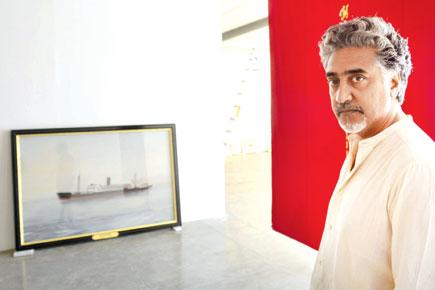
Generations of Desmond Lazaro's family migrated from Burma to Leeds between the 1950s and 60s on The S S Salween (in pic) which took the Suez-Mediterranean route
"After I moved to India for an MFA degree at the Faculty of Fine Arts in Baroda, I didn't return to England. Living in India meant that I had to avail of a PIO card (Persons of Indian Origin). In order to do that, I had to prove that I had traces of being 'Indian'," recalls 47-year-old artist Desmond Lazaro when we meet him at Chemould Prescott Road, Fort.
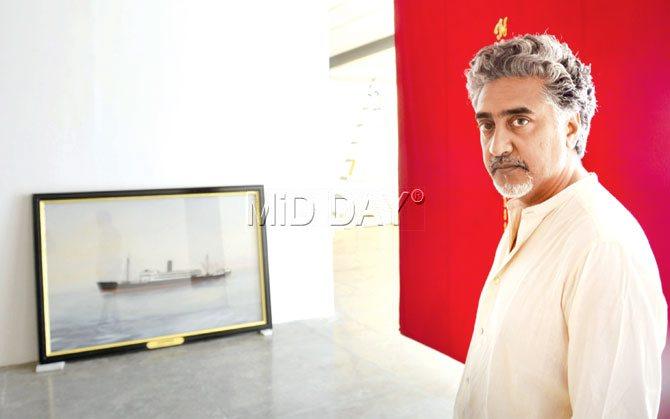
Generations of Desmond Lazaro's family migrated from Burma to Leeds between the 1950s and 60s on The S S Salween (in pic) which took the Suez-Mediterranean route. Pic/Bipin Kokate
ADVERTISEMENT
Each story that he shares feels like a fascinating journey that combines personal and world history. The artist was born in Leeds, England, in a family whose history stretches across continents. His parents migrated from Burma to Leeds in 1957, and his great-grandfather lived in Madras (now Chennai) during the 1800s.
Birth of an idea
A long and arduous search for this legacy led him on a mission during which he found baptism certificates of his great-grandparents from church records (in a tiny cupboard) at the St Mary's Catholic Church, at Armenian Street, Chennai.
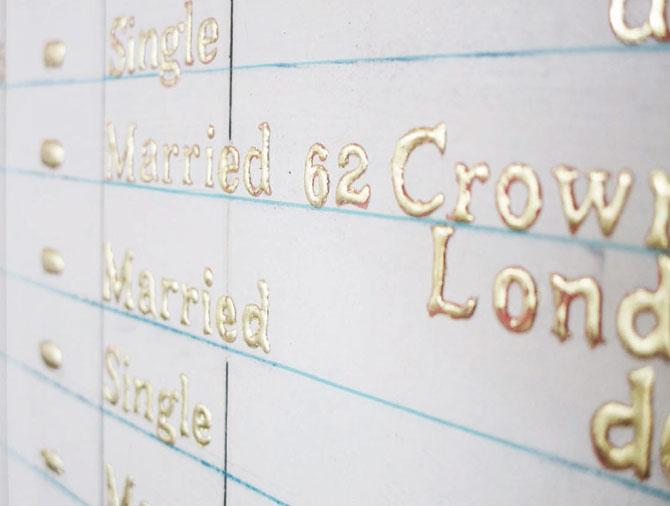
The Incoming Passengers list. Lazaro reproduces the list of passengers travelling on The SS Salween
"I wanted to paint a portrait of my grandfather. I thought how could I picture someone I don't know and haven't seen. I wanted to know who the man was. That's where it all started," he recalls.
What began as a quest to unravel the family tree, and the need to acquire a PIO certificate, led to the bigger idea of gauging the impact of immigration on
his family. All this has come together in a new exhibition, The Incoming Passengers, that opens at the gallery this week.
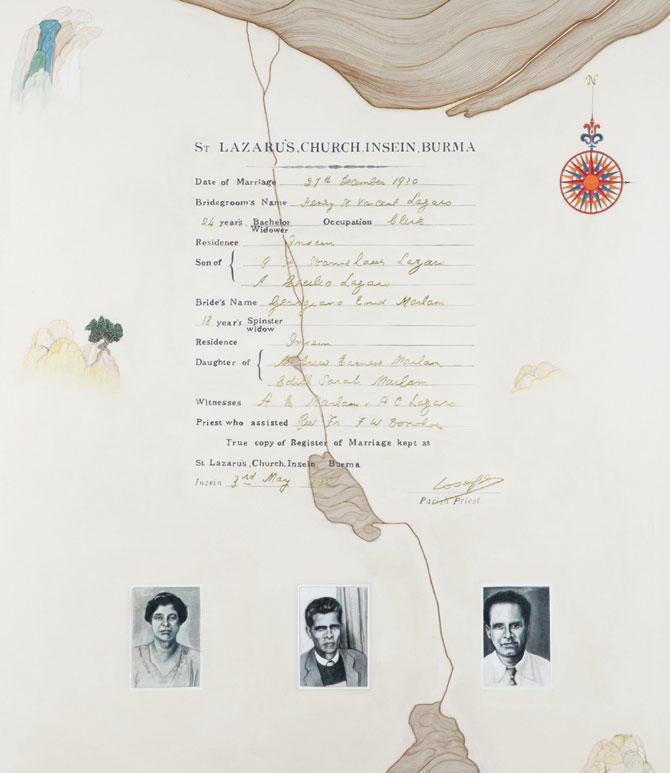
Fractured Family Tree
It also showcases a ten-minute film where Lazaro's mother Joyce Theresa D'Cruz talks about her experience of moving from her home in a small village located outside Rangoon to a brick house in London.
The show will include painted replicas of various documents, including baptism certificates as well as family documentaries that his father had filmed over the years. The miniature exhibits have been made using raised gesso (a white paint mixture) and natural pigment paint on
handmade paper sourced from Sanganer in Rajasthan.
Q. How did you research for this show?
A. My great-grandfather was a watchmaker who lived in Madras during the 1800s. That's where I found his baptism dates. The connection of finding roots that connect you to a place and it's people, was overwhelming. I found the baptism certificate interesting and rendered it in a gesso script, much like the original stained, printed, scratch marked books that some unknown clerk would have written years ago. I began to look for photographs but the first photography records weren't available for before 1850. India's first photography group, Madras Photographers, was set up in Madras in the 1860s. They mainly documented monuments in South India, which eventually became the Archeological Survey of India. Most records included documentation of Hindu temples and festivals with little information about the common man. I looked at how the East India Company was set up and why Madras and Calcutta were their big centres. I studied migration in that context. Many from India and Rangoon had moved to England then. I looked at how I had moved back to Pondicherry, not knowing much of my family history then. I moved because my wife is French. Immigration changes and impacts life hugely, and that interested me. When I was speaking to my mom, she mentioned about how they and my grandparents migrated from Burma to Leeds in the 1950s and 60s on the SS Salween that took the Suez-Mediterranean route. She lived in a village where they would visit Rangoon once a month. From there to a brick house in London, was an incredible move. I would always wonder what it must have been like. I asked her if I could record her recollections. That conversation is now a ten-minute film that forms a part of the exhibition.
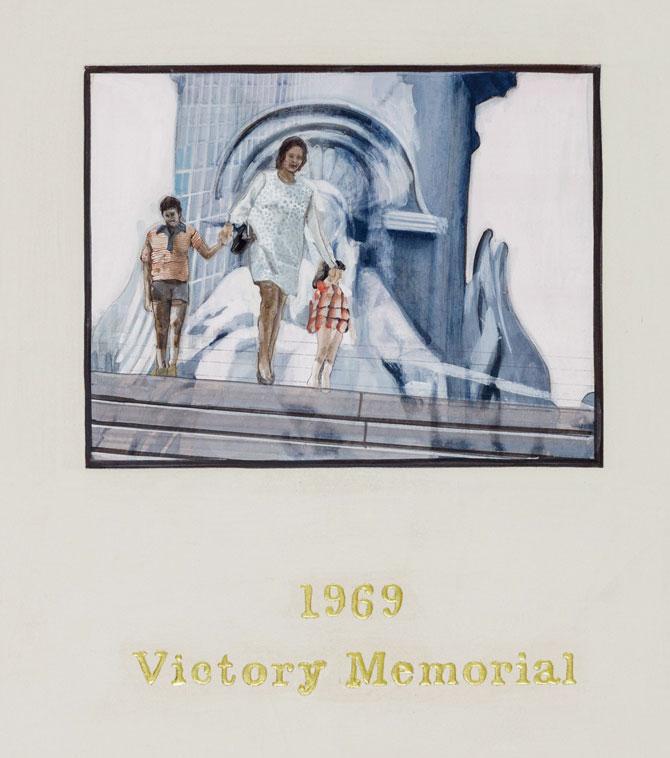
A miniature painting that imitates the polaroid style cine film shot by Desmond Lazaro's father showing Desmond with his mother and sister on a visit to the Victoria Memorial in London
Q. How were you able to source footage of your family?
A. My father presented me with a bunch of cine films. He had shot these family memories on his 8mm home movies' camera. Like all celluloid, these photos are slightly tarnished, out of focus; double exposed but became the source for documenting and re-visiting my family settled in England. It showcased how negotiating the imaginary homeland on a daily basis would have been the reality for many families of the Commonwealth that migrated westward. I captured these in small Polaroid-format paintings. Some are simple images from daily life – like a bunch of plastic roses that my mom kept on the table in a golden jar. She cleaned it everyday. It made me think of how immigrants couldn't afford fresh flowers everyday. There are also images of our visit to Buckingham Palace, customary for immigrants. We had a piano. My dad was a carpenter and plummer. He turned it into a bench for us. Immigrants couldn't afford to learn the piano, so we would make the best of what we had. My father took some out-of-focus pictures; the compositions were not great. But the memories are worth it.
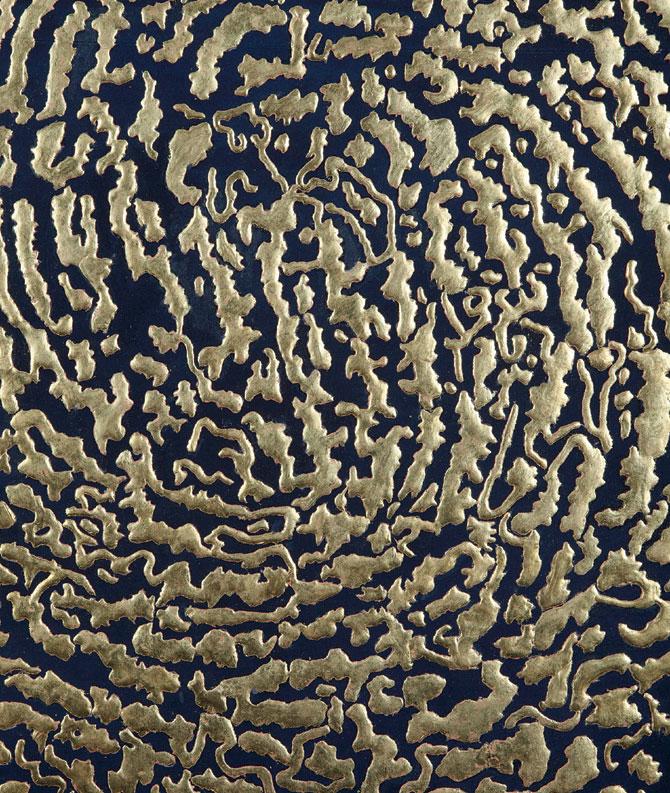
The Cosmic Egg is an oval image that resembles a big thumbprint and is based on the spiral, a technique in which we train to create fine spirals with controlled brush movements
Q. Tell us about the technique.
A. The script on the documents is a technique that I learnt since it fascinated me. Somehow, I wanted to show how we look at sacred script in modern day. For the Cosmic Egg I created 1 cm x 1cm spirals repeatedly; it's part of a meditative process. It also represents the concept of the 'golden womb' (Sanskrit: Hiranyagarbha) that led to the creation of the universe. The other exhibits are made using raised gesso (a white paint mixture) and natural pigment paint on handmade paper from Sanganer, Rajasthan.
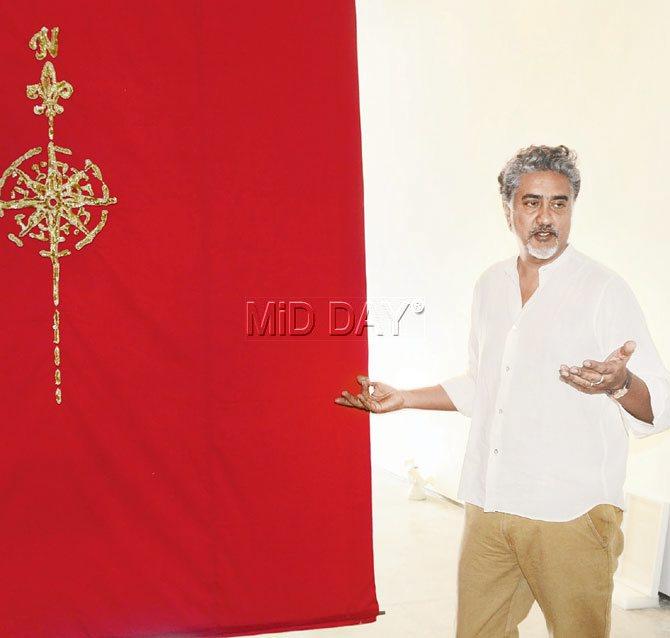
Lazaro with an artwork that uses embroidery. Pic/Bipin Kokate
Q. You're passionate about Pichhwai and miniature art, and have used elements of both in this exhibition. Are your works traditional or contemporary?
A. I learnt miniature painting and Pichhwai in Jaipur from a master for 12 years and it forms a part of my art background. They also influence all the contemporary work I do. When you learn a craft it becomes your bread and butter, your skin and bones. Everything you do has references even if you want to leave it behind. The images that I have created from the cine films are also in the Polaroid form with miniatures. I love isolating the image with Polaroid.
From March 10 to April 16
At Chemould Prescott Road, Queens Mansion, Fort.
Call 22000211
Log on to facebook.com/ChemouldPrescottRoad/
 Subscribe today by clicking the link and stay updated with the latest news!" Click here!
Subscribe today by clicking the link and stay updated with the latest news!" Click here!







